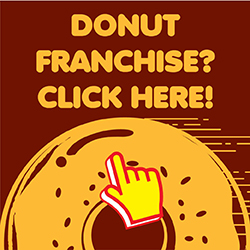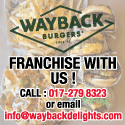 In many areas of business and life, I often have found the K.I.S.S. principle to be a good starting point and often a good endpoint in making a decision. In site selection the K.I.S.S. principle can also apply as many of the same factors and drivers come up each time you look at a new site.
In many areas of business and life, I often have found the K.I.S.S. principle to be a good starting point and often a good endpoint in making a decision. In site selection the K.I.S.S. principle can also apply as many of the same factors and drivers come up each time you look at a new site.
For those of you uninformed about the K.I.S.S principle, it stands for Keep It Simple – Stupid.
In site selection, I have seen check charts formed with more than 20 different items marked, often given equal weighting from major points like pedestrian traffic, to minor points like is there an awning over the doorway.
In Franchising, site selection is a function often jointly performed by the Franchisor (normally in the form of the Network Development Manager or a similar title), and the potential Franchisee. The level of involvement of each can vary, with the Franchisor basically giving approval for a site, and the Franchisee putting in their hard earned money (and borrowings) in the form of signing a lease, paying for the fit out, and generally funding their new business opportunity.
Following in America’s footsteps, a Franchisor should not do an “ostrich” (head in the sand), and say they had no involvement in the site selection decision. If a Franchisor is allowing their brand, product and systems to be utilized in a location, they are giving their agreement that the site is suitable for their business system.
Whilst it is the Franchisee’s final decision to proceed, a Franchisor needs to be aware that in many countries such as the USA, Australia and Europe, they have serious responsibilities, both legal and moral, to do their best to ensure the site will be a success.
What should you as a Franchisee be looking at, and what is reasonable for a Franchisor to do behind the scenes to ensure the best chance of your success?
Franchisee’s Due Diligence
Most Franchisees have little experience in site selection, and it is an inexact science that we practice. The site will define what your anticipated sales will be, and then you will probably do a simple forecast Profit and Loss.
The simplest P&L in my view has 6 lines: Sales (the hardest thing to predict) – $ Revenue
• Less Cost of Goods Sold (normally a % of Sales)
• Less Rent (known when you commit to the site)
• Less Labour (somewhat controllable cost)
• Less all other costs (phone, electricity, etc)
• Equals forecast Profit/Loss.
The sales are definitely the greatest point of variance, most of the other costs being fairly controllable, or a % of the Sales.
Impulse vs Destination
Think of whether your business is a high volume, “Impulse” type of business. An example would be a convenience store, milk bar or take away coffee location. The highest Impulse “businesses” I know would be a busker or a beggar – little set up cost and extremely mobile.
On the other hand a “Destination” business is one where you think or plan a great deal before visiting. Buying a new car, going to a top restaurant for your anniversary dinner or playing at your favorite golf course are all high destination businesses.
Think of where your business lies along a scale from high Impulse to high Destination. The higher Impulse business will need more passing traffic and pay more rent, where higher Destination businesses will be far less visible, and pay less rent. It is extremely important to match your business to where it would lie on this line. If you try and run a large furniture store in a high impulse area, the rent will kill you. If you try and run a coffee shop or a convenience store in a high destination, back of a shopping centre area, you will die of loneliness!
Shopping Centre Characteristics
Big shopping centres attract higher rents, and this is because they attract more people and normally average higher sales. It is no coincidence that most large retailers have their highest performing stores in large centres which inevitably charge the highest rental such as Plaza 66 in Shanghai or Landmark in Hong Kong.
1. Are we in the right precinct – shopping centres have precincts like clothing and fashion, food court, fresh food and the general areas. Think in terms of what other businesses compliment you, and are their customers similar to yours?
2. Most Centres have the busiest pedestrian section (near the main doors and near the supermarkets), down to the quiet end (near the $2 shops, and the Rug Bazaar). Cheap rents may look attractive; however they normally are that way as Centre Management knows that is the areas of least traffic. Multi level shopping centres have different levels of customers as you move upward. In Asia, where I have visited multi level electrical shopping centres, you range from stores like Toshiba and Panasonic on the ground (or main) floor, thru to a second hand computer repair shop on the 8th floor. Funny when you walk up there, you are on your own!
Once you have decided on the precinct, you are now down to the selection of actual sites. Think in terms of:
• Visibility – Can people see you as they approach – preferably from both directions.
• Width of store and window space
• Access – not coming off a side passageway
• Is there a void stopping pedestrian traffic walking to you
• Corner store or mid block
Strip Shopping Centres
Like Shopping Malls, Strips vary in size from very powerful, like Orchard Road in Singapore, Nanjing Road, Shanghai or Queens Road Central HK, down to small strips of dubious composition.
Shopping strips have “ant trails” and this is where you feel the main pedestrian traffic walks. This could be from the underground station, to the main supermarket, or maybe there is a pedestrian crossing that funnels the people together to cross the road.
Once you are comfortable with defining the busiest or most attractive (and probably higher rental) areas, you can decide where you want to be. If you are an impulse business, then you will be going for the busiest locations. If you are a destination business, then you can probably pay less rent, and take a less prominent site.
Think in terms of:
• Neighbours and proximity to major draw cards, vs. one street back, or on a side street.
• Visibility from the road (cars), and for passing pedestrians
• Parking and access to the car parks and public transport
• Ant trails and pedestrian traffic past the store
• Size of shop and width for window space.
Free standing stores
I believe the issues that make you commit to making
a purchase are:
• Location
• Facilities
• Operation
• Brand
From a Site Selection issue, Location and Facilities are the two things that come into play before you commit to a site. Operations are the “soft” things that come into play the instant you open the site, and Brand is something that is built up by years and years of advertising.
Location is when you think of 5 vacant blocks of land and think which one is most suitable to you.
From a big picture view, you can look at the demographics of the area, to see if the people living around the site are your type of potential customers.
Once convinced on the above, the location issues I look at are:
• Traffic – how many vehicles drive past each day?
• Visibility – will passing cars and pedestrians see my signs in time to decide to stop?
• Parking – is there parking available?
• Mid block or corner block – does it assist or harm visibility and access?
• Slope of land – hopefully we are not down in a hole?
• Gradient of road – Don’t be on a steep down hill run – risky to pull in.
Facilities are then what you place on the site. If it is already built, such as an existing shopping centre, then you probably have little say as the land and building are a complete package. In the oil industry, we could then decide whether we would have a convenience store, carwash, fast food outlets or workshops, all seen as Facility issues.
Summary
Site Selection is one of the most important areas of a successful retail business.
Your Franchisor should have a Process to assist them in approving a site. It is unusual that they will share their Sales forecasts with you for legal reasons, (but that is normal in Franchising). If they cannot explain to you what they look for, and demonstrate they do have a Process they follow, you should start to lose confidence in their professionalism. Ask them if they have a Process and a model they use internally to approve a site for a Franchise? It is no good you going broke, to then find out the Franchisor used the SWAG approach to site selection – Scientific Wild Ar..d Guess!
As a potential Franchisee, you need to do your own due diligence before investing your money, and think in terms of how suitable your location will be to what you wish to sell. Look for similar types of sites in the network, and ask those Franchisees how they are going? If opening a kiosk in a Major Shopping Centre – find out (hopefully from the Franchisor) who are the Franchisees also with kiosk stores in other Major Shopping Centres – and ask them how they are going!
The best way forward is to learn off other sites in the network as far as what is working, and what doesn’t work in terms of the Drivers of the business.
Select well Grasshopper!
In conjunction with Franchise Advisory Centre www.franchiseadvice.com.au, Peter Buckingham runs a full day workshop on Franchise Site Selection and Territory Planning, endorsed by the Franchise Council of Australia.
 Peter Buckingham is the Managing Director of Spectrum Analysis Australia Pty Ltd, a Melbourne based mapping, demographic and statistical consultancy. Spectrum specializes in assisting clients with decisions relating to store location, using various scientifi c and statistical techniques. To contact Peter email peterb@spectrumanalysis.com.au or call +61 3 98826488.
Peter Buckingham is the Managing Director of Spectrum Analysis Australia Pty Ltd, a Melbourne based mapping, demographic and statistical consultancy. Spectrum specializes in assisting clients with decisions relating to store location, using various scientifi c and statistical techniques. To contact Peter email peterb@spectrumanalysis.com.au or call +61 3 98826488.






